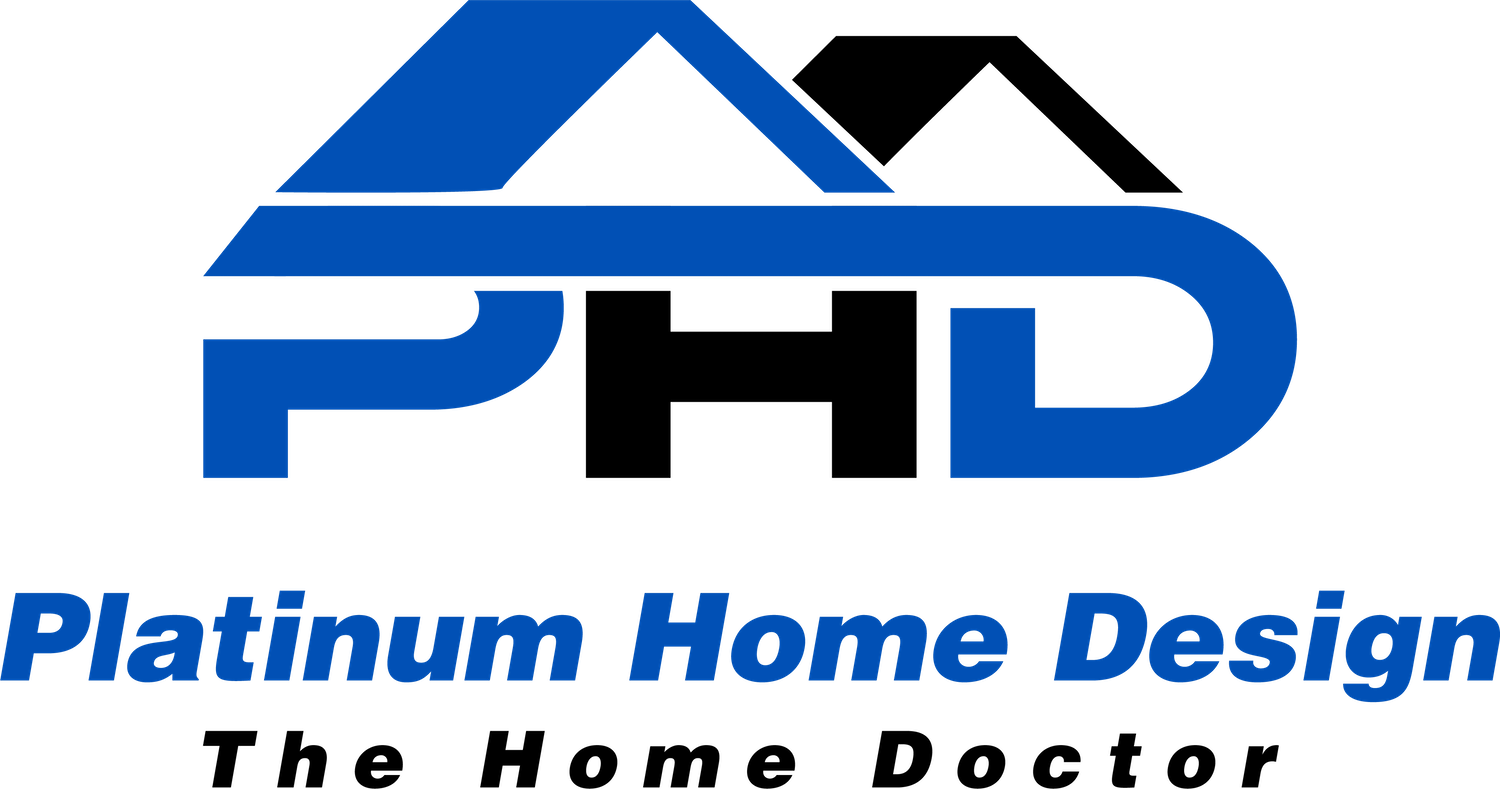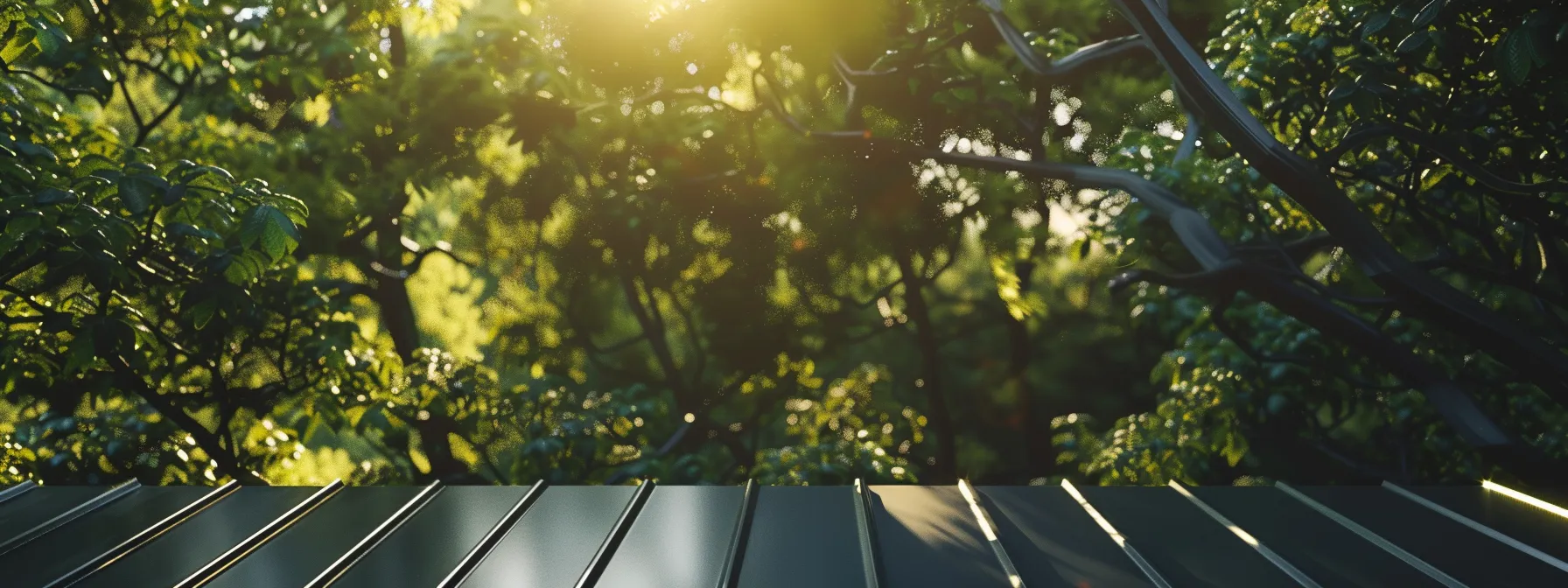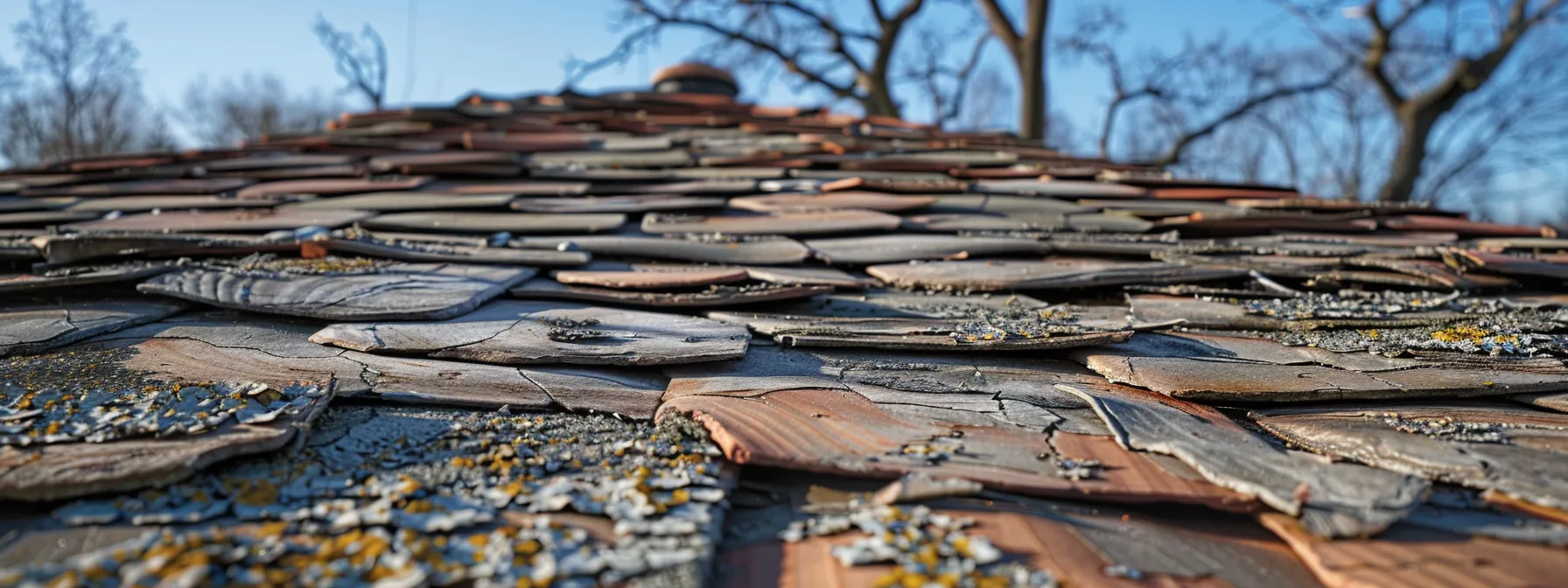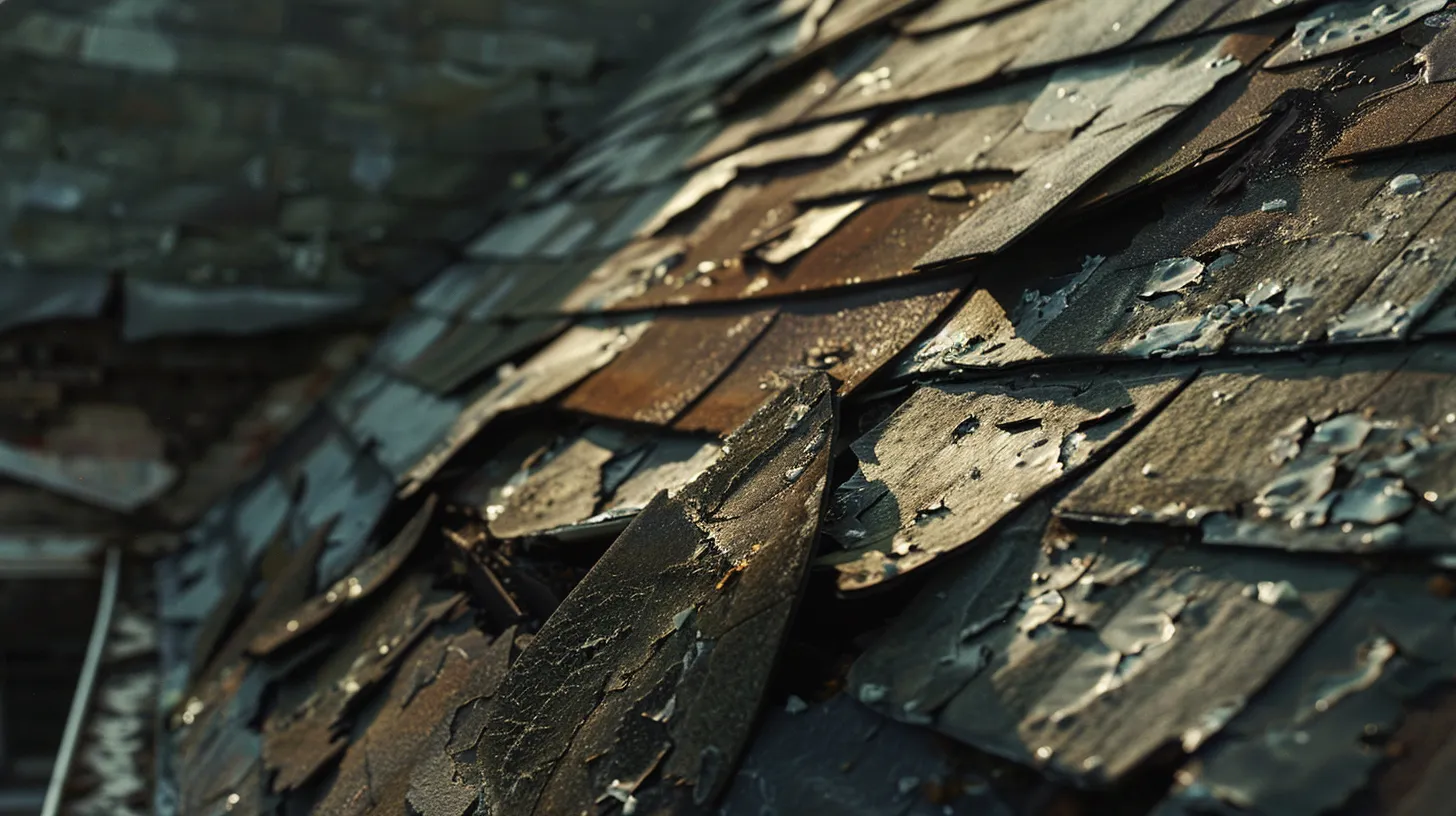
Improving Roof Lifespan Through Smart Inspection Frequency
Are you concerned about your roof’s lifespan and care? This post covers best practices for roof maintenance and explains why regular inspections keep your roof strong. You will learn key factors affecting roof longevity and how professional checks improve performance versus DIY efforts. This content offers practical advice and clear steps to solve common roof issues, ensuring your home remains safe and secure.
Key Takeaways
- you benefit from regular roof inspections that catch issues early
- routine upkeep saves money by preventing extensive repairs
- technology use, like drone imaging, provides clear views of hard-to-reach areas
- prompt repairs preserve your roof’s strength and extend its life
- consistent maintenance improves property safety and overall value
You monitor signs of infiltration in your home to ensure that your structural elements remain secure and efficient. Identifying these issues early protects your deck and overall building safety.
You inspect the deck regularly to prevent damage and exposure from weather. Keeping a keen eye on the metal roof reduces wear and tear over time.
You review the condition of your ceiling to detect any early signs of water damage. This practice helps maintain the integrity of both your interior and exterior spaces.
You address wear in your metal roof as part of your routine maintenance. Proactive measures for infiltration and deck upkeep protect the long-term durability of your home.
You walked away with solid insights. Now you step into clear advice on roof life and care practices.
Comprehensive Guide to Roof Lifespan and Care Practices
You schedule regular inspection routines to check the condition of your asphalt shingle roof and address any issues before they become costly problems.
You rely on a professional roof inspection to assess potential risks and strengthen your home’s safety features:
You provide your email address to receive updates and scheduling confirmations from your trusted construction experts in Chantilly, VA.
You review your warranty terms and collaborate with professionals who conduct thorough inspections, ensuring that each detail of your roof remains protected against damage.
The guide showed you how roofs endure. Now, you see why steady checks keep them strong.
Importance of Regular Roof Inspections for Longevity
You benefit from regular roof inspections as they help you understand common roof issues like mildew, moisture damage, and other factors that affect durability. A seasonal inspection checklist guides you to monitor and preserve your roofs, ensuring every component remains secure and functional.
Understanding Common Roof Issues That Affect Lifespan
You notice that common issues like hail damage can reduce the overall lifespan of your roof, prompting you to invest in regular roof maintenance. A free roof inspection helps you catch minor problems before they lead to full roof replacement, ensuring your investment is well protected.
You prioritize proper ventilation during each maintenance check as it sustains a healthy roof structure. Routine checks guide you in identifying signs of wear early on, making roof maintenance less of a burden and keeping potential repair costs low while improving your roof durability.
Seasonal Inspection Checklist for Homeowners
You schedule a seasonal roof inspection to address potential issues that may arise during severe weather and extreme weather conditions. You check drainage areas and inspect structural details to reduce stress on your roofing system, ensuring a consistent and secure environment for both residential and commercial roofing projects.
You use your regular inspections to spot problems early and save on repair costs. You monitor the roof for signs of wear from stress and enhance its performance by making necessary adjustments, providing you with peace of mind against severe and extreme weather impacts.
A solid roof bears the marks of time and weather. Next, you will learn how factors like materials and climate shape its lifespan and the frequency of inspections.
Factors Affecting Roof Lifespan and Inspection Frequency
You consider material type, climate challenges, and roof age when you plan for your next inspection. Factors such as proper maintenance for a flat roof and preparedness for a storm ensure every curb your home stands strong. Every roof inspected deserves your attention to prolong its lifespan and safeguard against damage.
Material Type and Its Impact on Maintenance Needs
You monitor how different roofing materials, such as slate, respond to your local climate and energy needs. You note that algae growth can quickly become a concern on certain surfaces, prompting you to adjust your maintenance schedule accordingly:
You appreciate that each roofing material demands unique care, with slate requiring precise cleaning methods to prevent algae buildup. You apply practical insights from your roofing inspections to set up a robust maintenance plan that counters the impacts of harsh climate and energy fluctuations.
Climate Considerations and Their Role in Roof Care
You consider how climate factors affect your wood and tile surfaces, paying close attention to wear and tear that can shorten a professional roof’s life. You arrange a regular commercial roof inspection to catch early signs of weather-related damage and make adjustments to your maintenance plan.
You monitor seasonal changes that stress your roof, particularly during rain and high humidity periods. You recognize that professional roof expertise and a keen inspection routine can manage wear and tear, ensuring your wood and tile installations stay secure and perform well over time.
Age of the Roof and Recommended Inspection Intervals
You recognize that as your roof ages, regular inspections become increasingly important to catch issues early, especially after heavy snow conditions that can load excessive weight on your structure. A reputable roofer can help you schedule commercial roof inspections that focus on detecting mold growth and other damage for your peace of mind.
You understand that timing your inspections based on the roof’s age is key to maintaining its performance, and that residual debris from seasonal weather can conceal critical wear signs. By partnering with an experienced roofer, you benefit from tailored maintenance intervals designed to address issues like mold and accumulated debris before they escalate.
Roof factors shape your view, and careful checks reveal their story. Next, solid tips will guide your steps for keeping roofs strong and sound.
Best Practices for Maintaining Roof Health
You monitor cleaning and debris removal techniques to protect your roof repair asset and reduce risk. You also understand that prompt repairs after inspections, using methods like repairing flashing and addressing concrete surfaces, are key to preserving your roof’s value. These practices lay the groundwork for practical insights discussed in the following sections.
Cleaning and Debris Removal Techniques
You keep your commercial roof in top shape by routinely removing debris and cleaning your metal roofing. Doing so helps you avoid a leak and ensures that your roof inspection uncovers no hidden issues that may affect your safety.
You apply practical cleaning techniques to maintain a secure structure and prevent blockages. Regular maintenance of your commercial roof, including careful cleaning and debris removal, provides you with a reliable safeguard against leaks and extends the life of your metal materials.
Importance of Prompt Repairs After Inspections
You recognize that timely maintenance is crucial to safeguard the integrity of your roof, and prompt roof repair replacement after inspections plays a key role in this process. Regular attention, including addressing issues like moss buildup and other minor damages, helps maintain the frequency of effective repairs, reducing risks that could affect your insurance policy.
By completing repairs without delay, you ensure your roof continues to offer optimal protection, with actions focused on preserving its overall strength and durability. Acting quickly on findings from an inspection not only minimizes further costs but also upholds the efficiency and reliability of your roof repair replacement efforts.
Your roof gets the attention it deserves with proper care. Now, learn how expert checks compare to simple self-inspections to keep it in prime condition.
Professional Inspections vs. DIY Checks for Roof Longevity
You decide whether to hire a professional inspector or conduct a DIY inspection based on the wind conditions affecting your roof and your current policy requirements. You learn when to call in an expert and see safe, effective steps for DIY checks that protect your roof’s integrity and maintain performance while keeping you informed.
When to Hire a Professional Inspector
You decide to hire a professional inspector when you notice potential issues, like water leakage or structural damage, that exceed your repair expertise. This step helps you avoid unnecessary risks while ensuring that your roof remains sound and secure.
You work with a trusted professional when regular DIY checks do not reveal clear signs of problems or when severe weather impacts your roof. This approach allows you to benefit from expert assessments and tailored repair advice that protect your investment and maintain safety.
Steps for a Safe and Effective DIY Inspection
You begin by ensuring proper safety equipment is on hand, such as a sturdy ladder, non-slip shoes, and a secure harness if you need to access your roof. This approach protects you while you perform a structured visual inspection of your roof’s condition, monitoring shingles, flashing, and any visible wear or blockages.
You then record and analyze each observation, noting areas that may require professional attention. Your deliberate review process helps you identify potential issues early, which minimizes risks and reduces overall repair expenses by guiding timely actions.
Your hands-on checks have revealed much about roof care. Next, you will see how modern tools help keep your roof solid and lasting.
Utilizing Technology for Enhanced Roof Care
You use drone inspections for hard-to-reach areas, ensuring no detail escapes your watch. Mobile apps help you track roof inspection and care data with ease. This approach gives you practical insights and ensures your roof’s condition remains secure and efficient.
Drone Inspections for Hard-to-Reach Areas
You use drone inspections to view inaccessible sections of your roof with precision and speed. This method offers you clear visuals and practical insights that keep your repair schedule on track.
You rely on drones to document the roof’s condition and spot minor issues before they become major problems. This technique minimizes risk and saves time while ensuring your roof remains secure and efficient:
Mobile Apps for Tracking Inspection and Care Data
You utilize mobile apps to track inspection and care data, allowing you to monitor your roof’s condition with ease. This approach gives you real-time updates on maintenance schedules and helps you record observations, making it simple to plan effective repairs before issues escalate.
You access detailed reports through user-friendly apps that display inspection histories and care recommendations. This digital tool streamlines your roof management process and provides you with actionable insights, ensuring you maintain optimal roof performance without unnecessary hassle.
New tech paves the way to care for your roof with precision. A strong program pays off through the years with fewer repairs and steady comfort.
Long-Term Benefits of Investing in a Robust Roof Care Program
You benefit from cost savings over time and increased property value when you invest in a robust roof care program. You save money by preventing extensive repairs and boost your home’s worth through consistent maintenance. The following sections explain how monitoring expenses and upkeeping your roof yield long-term value for your property.
Cost Savings Over Time
You save money by addressing roof issues early and preventing expensive repairs. You find that regular roof inspections and prompt maintenance allow you to avoid unexpected leaks and repairs, which means you spend less on emergency fixes and extend your roof’s overall lifespan.
You experience long-term cost savings by investing in routine roof care and professional inspections. You benefit from a more secure investment in your home, reducing the likelihood of significant repair costs and enhancing the value of your property over time.
Enhanced Property Value Through Maintenance
You improve your home’s market appeal when you invest in regular roof care. Consistent upkeep through inspections and timely repairs not only boosts overall property value but also instills confidence in potential buyers:
You secure a cost-effective investment by managing roof maintenance with precision. Your proactive approach results in a stronger roof, fewer emergency repairs, and improved property valuation over time.
The hard work now pays off in long-lasting comfort and security. Keep reading as we sum up the key insights and set your next course.
Conclusion
You have worked hard to maintain your roof and secure your investment through consistent inspection and timely repairs. Your dedication to monitoring roofing issues has paid off by keeping your property safe.
You have followed a clear routine that covers essential maintenance tasks, ensuring each issue is addressed before it escalates. This commitment minimizes the risk of major repairs.
You have seen the benefits of regular inspections, effective cleaning, and prompt repairs that protect your home from severe weather and costly damage. Here is the summary of your progress:
- Regular roof inspections to identify early signs of damage
- Systematic cleaning and debris removal to prevent blockages
- Timely repairs to secure structural integrity and avoid further repair costs
You now understand the practical steps that keep your roof in optimal condition, helping you avoid unexpected expenses. Your continued vigilance ensures your home remains a secure, valuable asset.
Frequently Asked Questions
What is the average roof lifespan with proper maintenance?
Your roof typically lasts 20 to 30 years when well maintained. Regular inspections and prompt repairs help uphold its durability while protecting your home’s overall integrity.
How often should you inspect your roof?
You should inspect your roof twice a year and after major storms to catch any issues early, preventing leaks or further damage.
Are DIY roof checks effective for durability?
DIY roof checks help identify obvious issues but do not substitute for professional evaluations; expert inspections and repairs ultimately secure your roof’s lasting durability.
Which factors influence roof longevity?
Roof longevity depends on quality materials, proper installation, scheduled upkeep, and local climate effects, all of which contribute to a durable and resilient roofing system that withstands the test of time.
Can technology improve roof care outcomes?
Yes, modern devices and software can refine roof inspections, pinpoint wear issues early, and improve repair scheduling, helping you receive precise, efficient care from trusted contractors in Chantilly, VA.
Conclusion
You protect your investment by scheduling regular roof inspections and addressing issues immediately. You secure your home’s value by preventing extensive repairs through proactive maintenance. You save costs over time by detecting minor problems before they escalate into expensive repairs. You reinforce safety and reliability for both residential and commercial projects with a robust roof care program.




